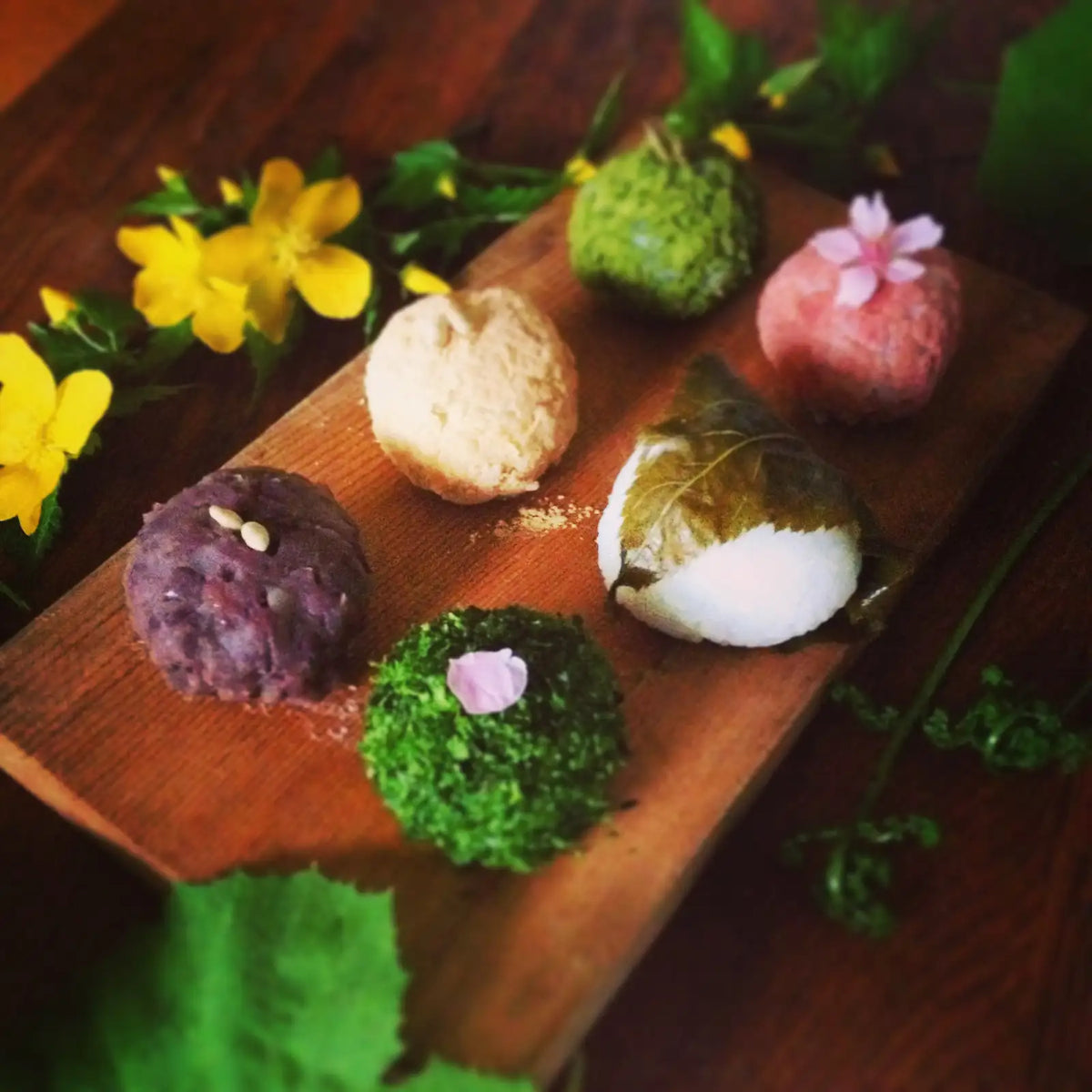

Discover the World of Wagashi
For many, Japan conjures images of cherry blossoms, serene temples, and perhaps sushi. But did you know Japan's rich culture is also deeply intertwined with a delightful and intricate world of sweets known as wagashi? These traditional Japanese confections are not merely desserts; they are works of art that symbolize the seasons and embody the essence of Japanese culture. Rooted in history and refined over centuries, wagashi play a significant role in rituals such as the traditional Japanese tea ceremony, where they are savored for their taste and admired for their beauty.
Seasonal Changes in Wagashi
One of the most captivating aspects of wagashi is how they change with the seasons. In Japan, each season brings distinct colors, flavors, and feelings, all of which are reflected in these traditional sweets. Spring ushers in cherry blossom-themed wagashi, with delicate pink hues and floral motifs capturing the essence of renewal and beauty. Summer sees cooler, refreshing designs and flavors, incorporating ingredients like sweet beans and jelly to provide relief from the heat. Autumn introduces wagashi with earthy tones and flavors such as chestnut or sweet potato, celebrating the harvest season's bounty. During winter , you'll find wagashi adorned with symbols of warmth and coziness, like snowflakes and pine trees, sometimes incorporating ingredients like red beans or mochi for a comforting treat. Each seasonal variation holds cultural significance, telling stories of the time of year through vibrant colors and intricate designs.
The Craftsmanship Behind Wagashi
Creating wagashi is an art form that requires patience, precision, and passion. The process begins with carefully selected ingredients like rice flour, red bean paste, and natural sweeteners. Traditional methods passed down through generations are still employed today. Artisans skillfully shape and color these ingredients to create confections that not only tantalize the taste buds but also delight the eyes. Every piece of wagashi reflects the dedication of the craftsman, as well as the beauty of nature and the artistry of Japanese culture. The meticulous attention to detail ensures that each wagashi is not just a treat but a masterpiece.
Wagashi and Festive Celebrations
In Japan, wagashi holds a cherished place in many festivals and celebrations. During the vibrant New Year celebrations, wagashi are offered to deities and shared among family members as a symbol of good fortune. In spring, during the Doll Festival, special wagashi are prepared to celebrate and wish for the health and happiness of young girls. Other festivals, such as the Star Festival in summer or the Moon Viewing Festival in autumn, also feature unique wagashi that add to the festivity and cultural richness of the events. Wagashi enrich these celebrations, creating a sense of unity and shared cultural heritage among participants.
Regional Wagashi Delicacies
Just as different regions of Japan are known for their unique cultures and cuisines, they also offer their own special types of wagashi. In Kyoto, for instance, yatsuhashi is a popular wagashi made with cinnamon-flavored rice flour, often enjoyed as an on-the-go snack. Meanwhile, in Nagoya, uiro is a local favorite—it's a steamed cake featuring various flavors, from matcha to cherry blossom. In Okinawa, chinsuko, a traditional shortbread cookie, reflects the region's subtropical climate and historical influences. Exploring regional wagashi offers a delicious way to experience the diverse culinary landscape of Japan.
Health Benefits of Wagashi
Beyond their aesthetic and cultural appeal, wagashi are also appreciated for their health-conscious attributes. Typically, these confections are lower in fat and calories compared to Western sweets, thanks to their use of natural ingredients like rice and beans. The philosophy of balance in Japanese cuisine is evident in wagashi, where sweetness is often offset by subtle flavors to promote harmony in taste and nutrition. Additionally, wagashi are often served in small portions, encouraging mindful consumption and allowing for the appreciation of each bite.
The Future of Wagashi
As global tastes evolve, wagashi are beginning to gain popularity outside of Japan. Artisans are experimenting with new flavors, blending traditional Japanese elements with international ingredients to create innovative confections that appeal to a wider audience. Modern twists on wagashi, such as chocolate-infused dorayaki or matcha tiramisu, show how these sweets can adapt while still preserving their cultural essence. This evolution not only keeps wagashi relevant but also positions it as a potential trendsetter in the global food industry.
Wrapping Up the Sweet Experience
Wagashi is more than just a treat; it is a celebration of Japanese culture, history, and the beauty of nature. Every piece tells a story, inviting both locals and visitors to savor the seasons and traditions of Japan. Whether you're a seasoned wagashi enthusiast or a curious newcomer, this delightful world offers endless opportunities for exploration and enjoyment. Why not try making wagashi at home or share your experiences with fellow enthusiasts? The joy of wagashi is one that is best shared, so join the conversation and become part of this sweet cultural exchange.



